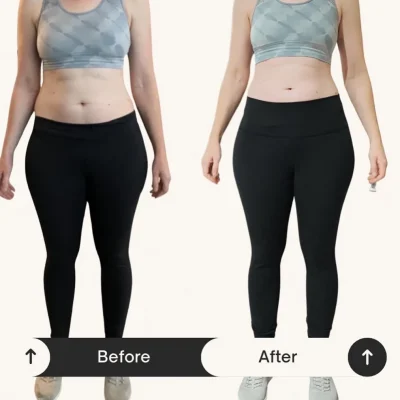You have the power to transform your body and achieve lasting weight loss by choosing the right types of exercise. Prioritizing a balanced combination of cardiovascular workouts, strength training, and flexibility exercises can not only enhance your overall fitness but also boost your metabolism. By engaging in regular, enjoyable activities, you will find it easier to stick with your weight loss journey for the long term. In this post, we will explore the best types of exercise that support sustainable weight loss while keeping your body and mind healthy.
Key Takeaways:
- Incorporate a mix of aerobic exercises, such as brisk walking, running, or cycling, to effectively boost calorie burn and improve cardiovascular health.
- Strength training is imperative for building muscle, which can increase metabolism and aid in long-term fat loss.
- Focus on consistency and variety in your workout routine to keep it enjoyable and motivate sustained engagement over time.
The Cardio Connection: Why Aerobic Exercise Reigns Supreme
Aerobic exercise, often referred to as cardio, is a game-changer when it comes to weight loss. This type of exercise not only helps burn calories during the activity but also boosts your metabolism post-workout, allowing you to burn more calories even while at rest. Engaging in regular cardio sessions, like running or cycling, can lead to significant fat loss and is accompanied by numerous health benefits, including improved cardiovascular efficiency and enhanced endurance.
The Role of Heart Health in Weight Management
Heart health plays a vital role in effective weight management. A strong heart enhances blood circulation, which delivers oxygen and nutrients to your muscles more efficiently during exercise. This increased efficiency means you can work out harder and longer, maximizing calorie burn. Moreover, maintaining a healthy heart lowers your risk for chronic diseases, thus promoting longevity and overall wellness as you pursue your weight loss goals.
Choosing the Right Cardio: From Running to Swimming
Selecting the right form of cardio can greatly influence your weight loss journey. Options abound, from high-impact exercises like running to low-impact activities such as swimming. Running is excellent for burning calories rapidly—at about 100 calories per mile—while swimming allows for a full-body workout that melts fat while being gentle on your joints. Whether you enjoy the rhythm of the treadmill or the soothing nature of laps in a pool, find what you love; consistency is key to sustainable success.
Strength Training: Building a Metabolic Engine
Engaging in strength training not only sculpts your body but also builds a metabolic engine that burns more calories at rest. Incorporating weight lifting or resistance exercises into your routine enhances muscle mass, leading your body to expend energy more efficiently. This increased muscle density can significantly aid in weight loss as you improve your body composition and achieve sustainable results.
How Muscle Mass Affects Caloric Burn
Muscle tissue requires more energy to maintain compared to fat tissue. For every pound of muscle you gain, your body burns approximately an extra 6-10 calories per day. Over time, the cumulative effect of increased muscle mass can contribute significantly to your daily caloric expenditure, helping you to remain in a caloric deficit for weight loss.
Best Practices for Effective Weight Training
To maximize the benefits of weight training, focus on a balanced regimen that targets all major muscle groups at least twice a week. Utilize compound movements like squats and deadlifts, which engage multiple muscles and elevate your heart rate, enhancing caloric burn. As a guideline, aim for 8-12 repetitions for 2-3 sets per exercise, gradually increasing weight to ensure continuous progress.
Proper form and technique play a vital role while performing weight training. Take the time to learn the correct movements to minimize injury risk and maximize efficacy. Consider splitting your routine into upper and lower body days for focused workouts, or incorporate full-body workouts for efficiency. Additionally, include rest days to allow your muscles to recover and grow stronger. Tracking your workouts can help you identify progress and keep you motivated on your journey toward sustainable weight loss.
High-Intensity Interval Training (HIIT): The Accelerator
HIIT has become a popular choice for those looking to achieve sustainable weight loss in a time-efficient manner. By alternating between intense bursts of exercise and short recovery periods, this training method ramps up your heart rate and maximizes calorie burn. In fact, many find that just 20-30 minutes of HIIT can yield results that may take hours of traditional cardio to achieve, making it an ideal option for those with busy schedules.
The Science of EPOC: Why HIIT Burns More Calories
After engaging in HIIT, your body undergoes a phenomenon known as Excess Post-Exercise Oxygen Consumption (EPOC), which importantly means you continue to burn calories long after your workout has ended. This occurs as your body works to restore itself to its resting state, requiring energy and therefore, burning more calories for hours post-exercise. Studies have shown that HIIT can elevate your metabolic rate by as much as 15% or more for several hours following your workout, significantly enhancing the calorie-burning effects compared to steady-state cardio.
Designing Your Own HIIT Workouts
Creating effective HIIT workouts doesn’t need to be complicated. Start by selecting the duration of your workout (typically between 20-30 minutes) and choose a mix of bodyweight exercises or cardio drills like burpees, squats, or sprinting. Aim for intervals where you exercise vigorously for 20-40 seconds, followed by 10-30 seconds of rest. Experimenting with the exercises and rest intervals will help you find a rhythm that challenges you while keeping you motivated and engaged.
For instance, you can structure a session with 30 seconds of high-intensity effort, such as jumping jacks, followed by 15 seconds of rest. Incorporate different movements like push-ups, mountain climbers, or kettlebell swings, ensuring a full-body workout. To enhance effectiveness, consider monitoring your heart rate and aiming for 80-90% of your maximum heart rate during the work intervals. By developing varied routines that challenge different muscle groups, you will keep your body guessing and continuously promote weight loss.
Incorporating Movement into Daily Life: Beyond the Gym
You can enhance your weight loss journey significantly by integrating movement into your daily routine. Simple changes like taking the stairs instead of the elevator, walking or biking for short trips, or even engaging in household chores can contribute remarkably to your overall calorie expenditure. Adopting a more active lifestyle doesn’t necessitate a gym membership; rather, it’s about seizing opportunities to move throughout your day, transforming mundane tasks into effective forms of exercise.
The Power of Non-Exercise Activity Thermogenesis (NEAT)
NEAT comprises all the calories you burn from activities that aren’t structured exercise, such as fidgeting, standing, or walking around your home or workplace. By increasing your NEAT, you can create a significant calorie deficit without dedicating hours to the gym. Studies show that individuals with higher NEAT can burn upwards of 2,000 calories per day just through movement throughout their routines, leading to effective weight management over time.
Fun Activities that Burn Calories: Dancing, Hiking, and More
Finding joy in your activities can be a game-changer for sustainable weight loss. Consider dancing, which can burn about 400-500 calories an hour depending on the style, or hiking, which combines the benefits of cardio with the added challenge of varied terrain. Other enjoyable options include sports like soccer or basketball, which build endurance while also fostering teamwork. When you engage in activities you love, you’ll find that physical movement becomes less of a chore and more of an integrated part of your lifestyle.
Hiking is particularly beneficial, as it often leads to prolonged cardiovascular exertion and can enhance lower body strength while allowing you to soak in nature. Dancing is another fantastic option; it not only elevates your heart rate but also boosts your mood, thanks to the release of endorphins. Whether it’s an energetic Zumba class or an impromptu dance-off in your living room, incorporating activities that make you smile fosters a positive relationship with exercise. This sense of enjoyment is necessary for long-term adherence to a more active lifestyle, helping you achieve your weight loss goals without feeling restricted.
The Mental Game: Mindset and Weight Loss Success
Fostering a supportive mindset can significantly influence your weight loss journey. Developing a positive relationship with food, exercise, and your body often leads to more sustainable habits and long-term success. A shift in thinking helps to diminish the emotional ties to food and replaces the cycle of guilt with empowerment. Moreover, adopting a growth mindset encourages you to view challenges as opportunities for growth, maintaining your motivation as you encounter natural ebbs and flows in your progress.
Setting Realistic Goals to Maintain Motivation
Establishing achievable goals is crucial for keeping your motivation alive. Instead of aiming for immediate, drastic weight loss, focus on smaller, incremental changes that are more attainable. For example, losing just 1 to 2 pounds per week not only promotes healthy habits but also helps maintain your motivation as you witness your progress over time.
The Importance of Consistency and Habit Formation
Building lasting habits through consistency lays the groundwork for successful weight management. When you commit to regular exercise and healthy eating patterns, it becomes easier to maintain these behaviors over the long term. Incorporating exercise into your daily routine—even for just 20-30 minutes—can lead to remarkable progress. Adopting a routine that includes activities you enjoy enhances the likelihood that you will stick to your regimen, creating a positive feedback loop that reinforces your new healthy lifestyle.
Emphasizing consistency over perfection proves that weight loss is a marathon, not a sprint. You don’t have to hit the gym every day or follow a strict meal plan to see results. Gradually weaving exercise into your weekly schedule or establishing a ritual around healthy meals fosters a sense of balance and stability. As you celebrate small victories, like completing a full week of workouts or enjoying wholesome meals consistently, motivation will compound, empowering you to achieve your weight loss goals sustainably.
Summing up
Hence, combining aerobic exercises such as running or cycling with strength training and flexibility activities will provide you with a balanced approach to sustainable weight loss. Incorporating high-intensity interval training (HIIT) can also optimize your results. Furthermore, focusing on consistency and finding activities you enjoy will help you maintain a long-term regimen. By making these exercises a regular part of your lifestyle, you can effectively achieve and sustain your weight loss goals while enhancing your overall health and fitness.
Q: What types of exercises are most effective for sustainable weight loss?
A: The best types of exercises for sustainable weight loss include a combination of cardiovascular workouts, strength training, and flexibility exercises. Cardio activities like running, cycling, and swimming help burn calories and improve heart health. Strength training, on the other hand, builds muscle mass, which can increase your resting metabolic rate, allowing you to burn more calories even when at rest. Flexibility exercises, such as yoga or stretching, improve overall body function and can help reduce the risk of injury during more intense workouts. A balanced routine that incorporates all three types of exercise can maximize weight loss and promote long-term health.
Q: How often should I exercise for optimal weight loss results?
A: For optimal weight loss results, it is generally recommended to engage in moderate-intensity aerobic exercise for at least 150 minutes per week, or about 30 minutes a day, five days a week. Additionally, incorporating strength training exercises at least two times a week is vital for building and maintaining muscle mass. It’s important to listen to your body and gradually increase the intensity and duration of your workouts to avoid burnout or injury. Creating a schedule that fits your lifestyle and allows for flexibility will help sustain long-term adherence to your exercise regimen.
Q: Can I lose weight without going to the gym? What are some alternative exercises?
A: Yes, it is entirely possible to lose weight without going to the gym. There are many alternative exercises that can be done at home or outdoors. Bodyweight exercises such as push-ups, squats, and lunges are effective for strength training and can be performed anywhere. Similarly, activities like walking, jogging, hiking, dancing, or even doing a workout video at home can provide an excellent cardiovascular workout. Incorporating everyday activities, such as gardening, cleaning, or playing with children, can also contribute to your daily exercise and help with weight loss. The key is to find activities that you enjoy, making it easier to stick to a consistent routine.










































